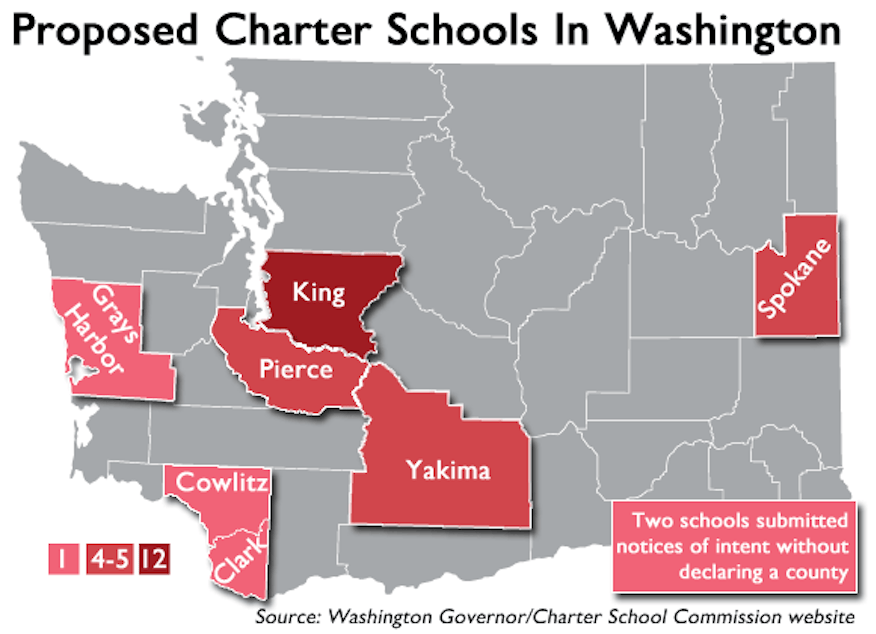Meet The (Hopeful) Charters: Some Mixed Records, Others Just Failing

Supporters of last year’s charter schools initiative in Washington state promised the law would bring successful charter models from across the country and improve academic outcomes for public school students.
But a KUOW analysis found that the six established out-of-state charter organizations that hope to open schools here are failing to consistently meet state standards where they operate.
Pioneer Youth Corps' military charter school in Springfield, Ore., is currently ranked in the bottom 5 percent academically among Oregon schools. The organization is pitching a similar school in Washington.
CAL Elementary, which has filed to open a branch of its Ohio reading- and math-focused charter school in Seattle, has an "F" rating from that state's department of education.
And in Texas, the state has notified the Por Vida charter chain that it is falling so short of state standards at one of its three schools that its accreditation is at risk. Meanwhile, Por Vida has filed paperwork to open a charter school in Yakima.
Sponsored
Mixed Records For At-Risk StudentsAmong the larger, established contenders are Green Dot and Summit Public Schools, two California charter chains that Lisa Macfarlane, director of Democrats for Education Reform Washington State, called "a couple of the country’s strongest charter school network folks." Green Dot is seeking a charter in Tacoma. Summit proposes opening schools in Tacoma and Seattle.
Macfarlane said she was impressed by what she saw when her organization, which backed the charter school law, took lawmakers from across the country on a tour of two Summit schools in San Jose, Calif., last year. "I'd never seen anything like it," Macfarlane said.
The two high schools Macfarlane visited, Rainier and Tahoma, met California state growth targets school-wide last school year. But the two other Summit schools open long enough to accrue state data both failed to meet growth targets for three student subgroups: Latino students, socio-economically disadvantaged students and English learners.
Academic standards can vary dramatically by state. But of the 27 charter schools for which state data were available, only 12 schools met all of their state benchmarks.Many traditional public schools where those charters operate have similar struggles.Gary Miron, a professor of education at Western Michigan University, said that reflects what he’s found in his research.
"Charter schools perform at similar levels to district schools with similar populations," Miron said. "So in terms of evidence that charter schools are outperforming traditional public schools, we don’t have that."
Sponsored
Officials from Green Dot and Summit say their schools that are missing state growth targets are still doing well relative to schools with similar demographics.But Miron said studies show that the most successful charter schools tend to have demographics different than the surrounding community.KUOW found the same is true of the high-performing charter schools run by operators that want to open schools here in Washington state. Most of the 12 charter schools meeting state standards have much smaller percentages of low-income students, English language learners and special education students than their surrounding districts.
Those are among the “at-risk” student groups that charter boosters said would benefit from Washington’s charter law.
At Summit's high-performing Tahoma high school, for instance, 48 percent of students qualify for free or reduced-price lunch, compared with 82 percent in the surrounding school district.
Just 9 percent of Tahoma students are learning English, compared with 28 percent district-wide.
Similarly, 5 percent of Tahoma students have disabilities, compared with 17 percent district-wide.
Sponsored
And 64 percent of parents of Tahoma students report having attended at least some college, twice the rate of the surrounding district.According to the new law, charter applicants with existing schools will have to show that they have a track record success with at-risk populations.
Final applications for prospective charter schools are due Nov. 22.

